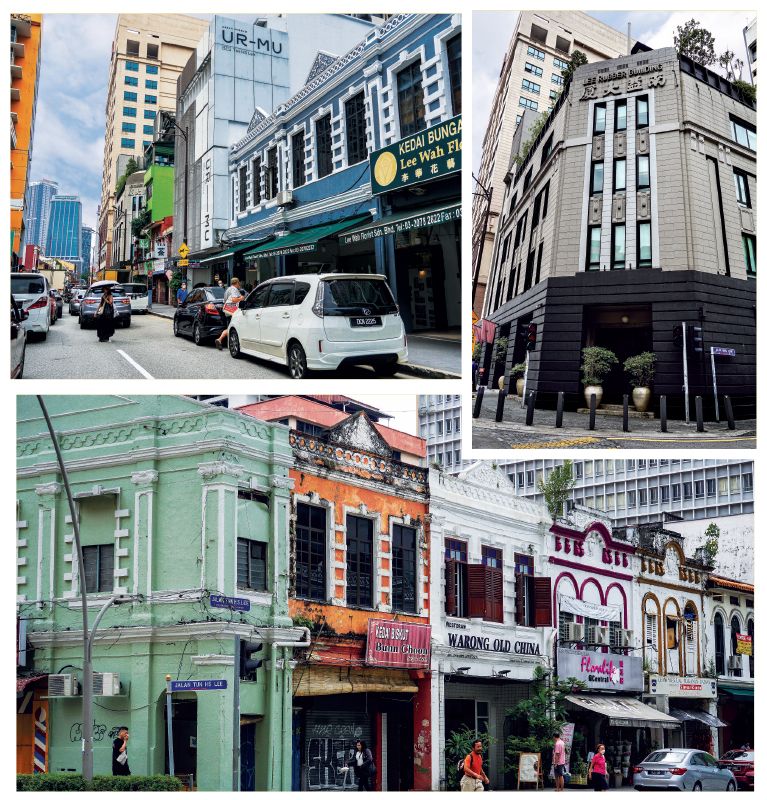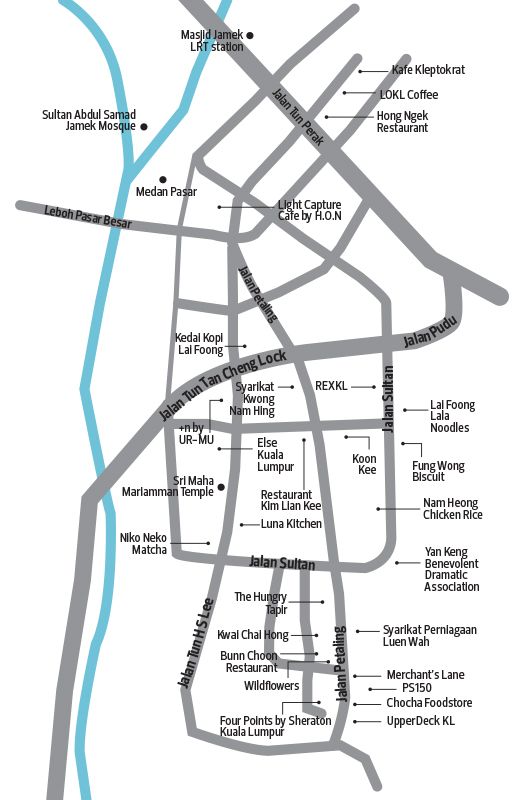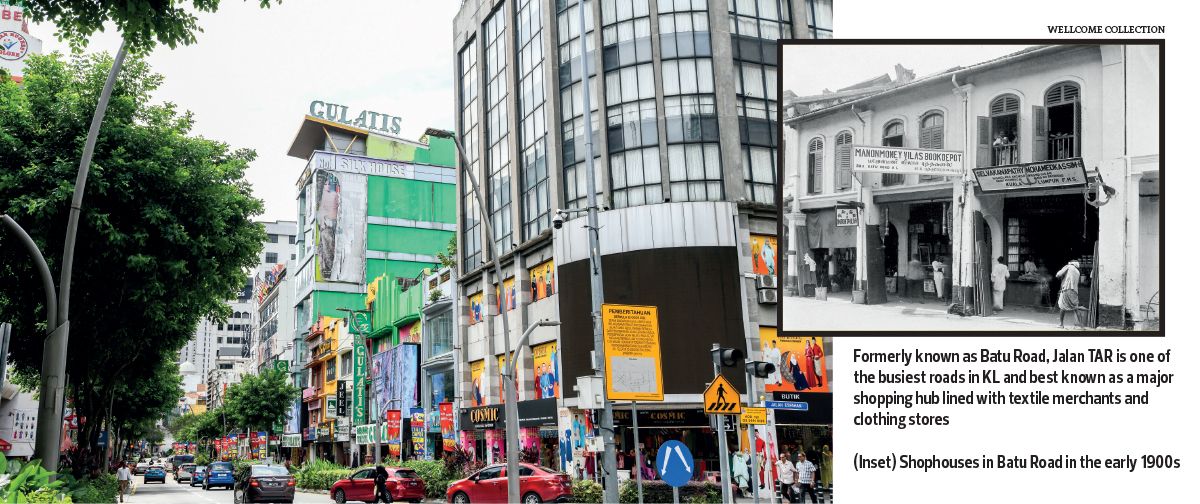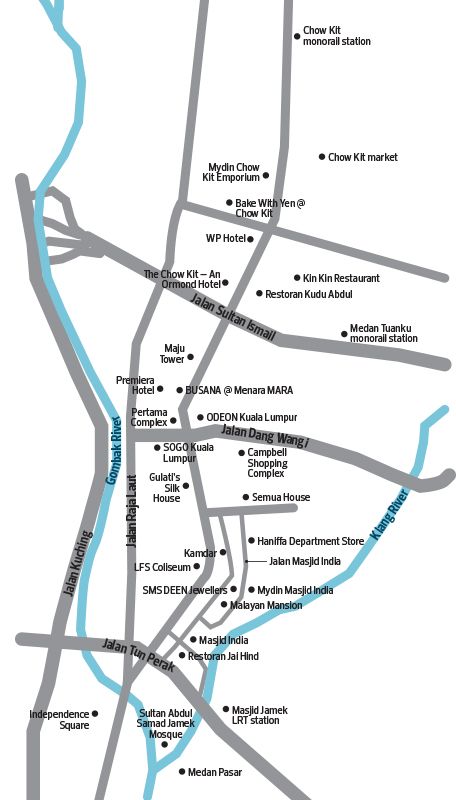
This article first appeared in City & Country, The Edge Malaysia Weekly on January 20, 2025 - January 26, 2025
Pre-war shophouses in Malaysia add a certain charm and depth to its cityscapes. In Kuala Lumpur, many of them are concentrated around the confluence of the Klang and Gombak Rivers, where the town is said to have started and grown in the mid-19th century as a trading post, spurred by tin mining.
The pre-war shophouses in the capital city that we see today were built predominantly from the late 1800s to early 1900s, as the earlier structures that were built of wood and attap (thatch) were previously destroyed during a period of conflicts, fires and floods.
The structures that stand today are made of brick and tile, and are situated in various sections of the town, with the Old Market Square (now Medan Pasar), located east of the Klang River, as the commercial centre. Once the heart of Chinatown, Medan Pasar today has been pedestrianised and turned into a green square with the Art Deco clock tower, built in 1937, still standing.
The other sections of town where pre-war shophouses can be found include Petaling Street, or present-day Chinatown, to the south, where the Chinese had congregated in the early days; and across Java Street (now Jalan Tun Perak) to the north, where the Malay community had resided and also where Indian Chettiars, or money lenders, and Indian Muslim traders had set up businesses nearby in the later years.
Many of these old quarters are still very much part of the commercial fabric downtown. And with conservation efforts becoming more mainstream, many of these crumbling shophouses are getting a new lease of life, rejuvenating the historical neighbourhood one property at a time.
According to the latest data from the National Property Information Centre (Napic), there were at least 1,197 pre-war shops in Kuala Lumpur as at 3Q2024.
The following are some of the main historical commercial streets in downtown Kuala Lumpur that have seen renewed interest of late.
Jalan Tun H S Lee
Previously known as High Street, this historic artery has some of the oldest shophouses in town, dating as far back as the 1880s. The 1km stretch is also home to three of the oldest places of worship in Kuala Lumpur: the Sri Maha Mariamman Temple, Guan Di Temple and Sin Sze Si Ya Temple, which were all founded in the late 1800s.
“Jalan Tun H S Lee is also the birthplace of Malaysia’s first local bank, Maybank,” says Knight Frank Malaysia director, head of project management, Joshua Mathew de Souza.
The first Maybank branch in Malaysia, which opened its doors in September 1960, occupies a corner shop formerly known as Mansion House. The branch located at No 92 is still in operation today.
Jalan Tun H S Lee is now known for its bustling café scene, with popular establishments such as LOKL Coffee Co, Light Capture Café by H.O.N, Kafe Kleptokrat, Kafe Kleptokrat and Timothy Cafe. These cafés have a hipster vibe with raw and rustic interiors, complementing the pre-war buildings harmoniously.
Newer dining spots and bars such as Luna Kitchen and Coupe De Vin have also popped up in recent years among old school eateries such as Hong Ngek Restaurant, Soong Kee Beef Noodles and Kedai Kopi Lai Foong, which are institutions in their own right.
The F&B offerings are interspersed with other trades and businesses, including old establishments such as Lee Wah Florist and Chai Huat Hin, both of which have been around since the 1970s.
The stretch has seen pockets of renewal, with latest additions such as Else Kuala Lumpur, a five-star boutique hotel that occupies the 95-year-old former Lee Rubber Building; and Malaysian architect Tan Loke Mun’s third UR-MU art gallery-museum, +n by UR-MU.
According to data from the Valuation and Property Services Department (JPPH) and Knight Frank Research, average transacted prices of the pre-war shophouses on Jalan Tun H S Lee have been relatively stable in the past five years at RM1,800 to RM2,000 psf over land area.
“In terms of rents, no transactions were recorded on Jalan Tun H S Lee last year, but we can take adjacent Jalan Petaling and Jalan Sultan as reference. Their average transacted shophouse rents are RM17.50 and RM36 psf over built-up area respectively, depending on the location and condition of the buildings,” says Joshua.
“With high occupancy rates and increasing interest in the preservation, conservation and adaptive reuse of pre-war buildings, Jalan Tun H S Lee remains a significant area for urban renewal. Every Malaysian should seize the opportunity to explore this historic street and its fascinating history.”
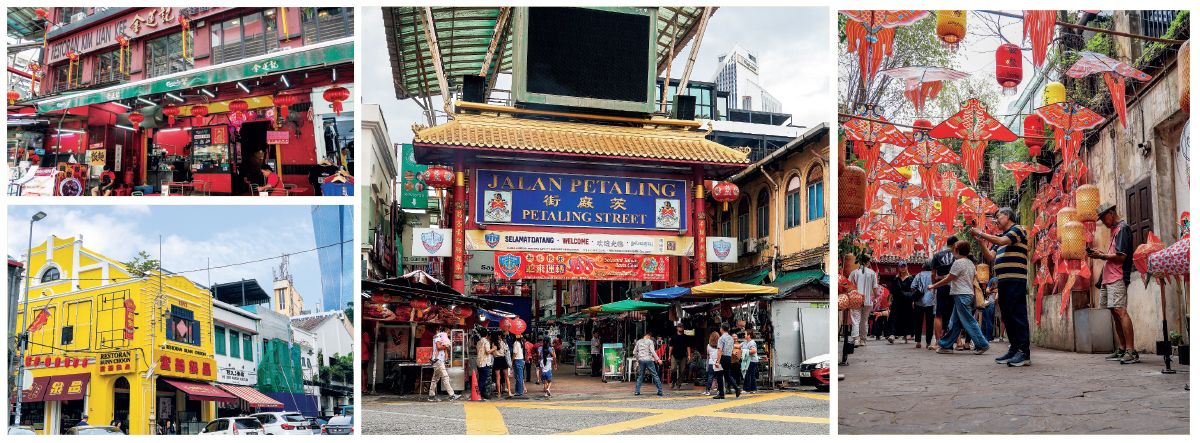
Petaling Street
Jalan Petaling, more commonly referred to as Petaling Street, is where Chinatown is centred on. Stretching close to 800m southwards from the intersection of Jalan Tun H S Lee and Leboh Pasar Besar near Medan Pasar to Bulatan Merdeka, the street is a tourist attraction mainly because of its pedestrianised market section that runs from the intersection of Jalan Tun Tan Cheng Lock to the intersection of Jalan Sultan, as well as the whole stretch of Jalan Hang Lekir.
While the street market section is notorious for counterfeit goods stalls manned by foreign nationals, one can still find popular local food stalls and restaurants that have been around for many years, such as Kim Lian Kee Hokkien Mee, Koon Kee Wan Tan Mee, Sze Ngan Chye Roast Duck, Madam Tang’s Muah Chee and the air mata kucing (longan) drink stall.
“Food can still be said to be the main driver of visits to Jalan Petaling. Kim Lian Kee has been operating there since 1927 and is the oldest establishment in Jalan Petaling. Other notable establishments include Kwong Nam Hing hardware store and Luen Wah leather goods wholesaler,” Joshua says.
He adds, however, that Chinatown has undergone significant changes since its heyday.
“Chinatown was a very different place back in the late 1800s and early 1900s. It was settled by a diverse society that brought with them a vibrant mix of trades and industries such as barbershops, beauty parlours, carpentry shops, hardware stores and wholesalers from various sectors that made Chinatown a hub buzzing with activity.
“Many traders also lived in the upper levels of the shophouses while conducting business on the ground floors.
“Today, many of these buildings have been left neglected, requiring much-needed care and attention. Perhaps urban placemaking and urban renewal strategies could breathe new life into this historic area.”
The last major facelift in Petaling Street was in 2003, when the government invested RM11 million to transform the market section into a pedestrianised shopping street. Two Chinese-style arches were also installed at the intersections of Jalan Sultan and Jalan Tun Tan Cheng Lock to demarcate the market section, and roofing was installed on that stretch to shade traders and visitors from the heat and rain.
While one can find dozens of budget hotels cramped among eateries and various other trades and services, from stationery shops to massage parlours, along Petaling Street, the south section near the Four Points by Sheraton Kuala Lumpur, Chinatown, hotel has seen some renewed interest of late. It has become a popular destination for its dining and nightlife scene, with a growing number of modern fusion restaurants and bars lining that stretch, such as Merchant’s Lane, UpperDeck KL, Wildflowers, Chocha Foodstore, PS150, The Hungry Tapir, Small Shifting Space, G-String KL, Da Bao Restobar and Concubine KL. Many also flock to eateries such as Bunn Choon and Ho Kow Hainam Kopitiam for a spot of tea, or yum cha.
One of the latest attractions in this commercial pocket is Kwai Chai Hong, a revitalised back alley tucked away between Jalan Petaling and Lorong Panggung that is filled with art murals, installations and instagrammable spots to take visitors back to the golden era of KL Chinatown in the 1960s. Kwai Chai Hong is the winner of The Edge Malaysia Excellence in Place Regeneration Award 2023.
Joshua observes that this renewed pocket, which intersects with notable streets Jalan Sultan, Jalan Balai Polis and Jalan Panggong, has enjoyed high demand in recent years, supported by spillover demand from the main thoroughfare.
“This vibrant area is now a foodie haven, attracting trendy F&B establishments that complement its historical charm. Kwai Chai Hong and the various bars and restaurants there have made this enclave a tourist destination in its own right,” he says.
According to data from JPPH and Knight Frank Research, the transacted prices of pre-war shophouses on Jalan Petaling have remained relatively stable for the past five years at RM1,950 to RM2,200 psf. The average transacted rents of shophouses in general on Jalan Petaling are RM17.50 psf over built-up area, except for properties closer to Jalan Sultan, which have an average transacted rent closer to RM36 psf over built-up area because of the higher demand there, Joshua says.
Jalan Sultan
Jalan Sultan, which runs about 630m from the Pasar Seni LRT station to the intersection of Jalan Tun Tan Cheng Lock/Jalan Pudu/Jalan Tun Tan Siew Sin, is filled with eateries, restaurants and food stalls, along with budget and boutique hotels as well as a dozen or so other retailers, offices and service providers ranging from pharmacies, dental clinics and beauty salons to tea shops.
The stretch offers a more localised flavour than Petaling Street, with well-known restaurants such as Lai Foong Lala Noodles and Nam Heong Chicken Rice, both of which have earned the Michelin Bib Gourmand. The famous Chinese pastry shop Fung Wong, whose history dates back more than a century, has also made Jalan Sultan its home, relocating from 28 Jalan Hang Lekir at end-2019.
Despite being overshadowed by the towering Merdeka 118, the pre-war buildings and traditional shophouses on Jalan Sultan still retain much of their distinctive past.
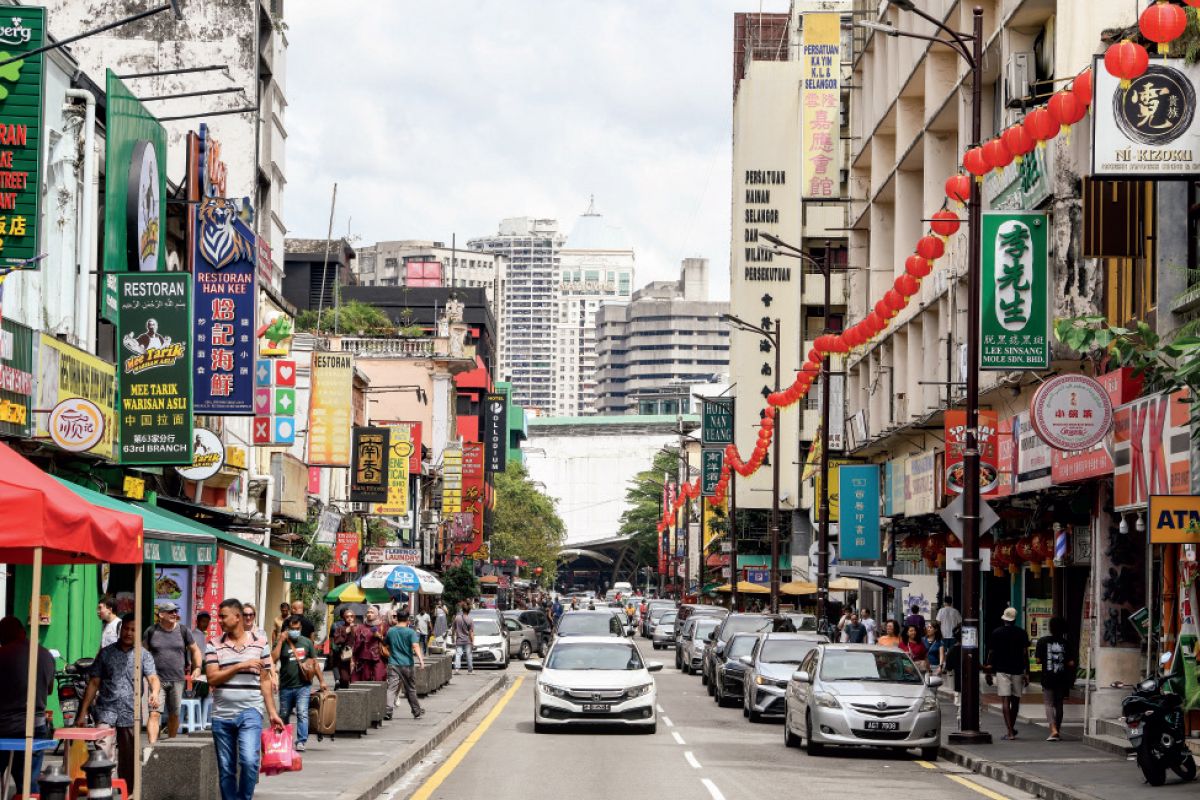
One such example is REXKL, which is the old Rex cinema given a new lease of life through adaptive reuse. The 60,000 sq ft community and cultural space features local artisans, restaurateurs and retailers, including a café, bookshop and an immersive digital art gallery.
Meanwhile, the more-than-a-century-old Yan Keng Benevolent Dramatic Association building at No 51 continues to stand at the intersection of Jalan Sultan and Jalan Hang Jebat. The drama association, which dates back to the 1920s, is one of the oldest Chinese opera clubs in the city. At the time of writing, maintenance works on the external façade and flooring were underway, according to a Kuala Lumpur City Hall project banner on site.
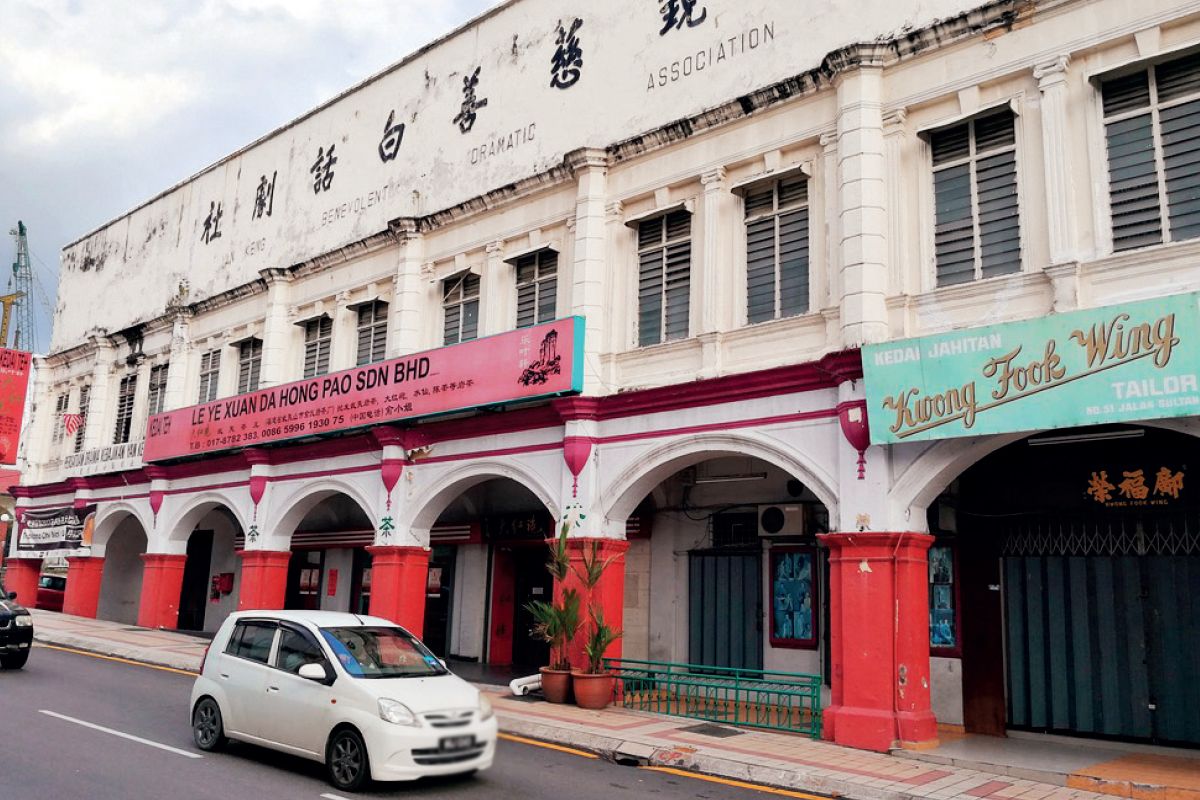
Besides the drama association, the building is home to a tea shop and 110-year-old local tailor shop Kwong Fook Wing, which share the ground floor. The building’s owner has reportedly thwarted attempts to acquire and demolish the unique triangular building several decades ago.
“Despite modern developments, the essence of Jalan Sultan remains deeply connected to the city’s roots. The street’s historical charm, combined with contemporary spaces such as REXKL, makes it an exciting destination for both locals and tourists. As Kuala Lumpur continues to evolve, Jalan Sultan stands as a testament to the city’s resilience in preserving its rich heritage while embracing new possibilities for the future,” says Joshua.
According to JPPH and Knight Frank Research, the latest data from 2015 shows that average transacted prices of shophouses on Jalan Sultan are from RM1,950 and RM2,200 psf over built-up area. Current transacted rental rates of the shophouses on Jalan Sultan are on average RM36 psf over built-up area. Joshua says the prices reflect the growing demand for space in the area.
Jalan Tuanku Abdul Rahman
Formerly known as Batu Road, as it was originally a track leading to Batu, where the village, limestone caves and tin mines were, Jalan Tuanku Abdul Rahman (TAR) has transformed into one of the busiest roads in KL, cutting across some of the city’s busiest sections, including Chow Kit and Dang Wangi.
The close to 2km stretch Jalan TAR is best known as a major shopping hub, especially for Muslim clothing, as it is lined with textile merchants such as the iconic Gulati’s and Kamdar, fabric wholesalers as well as clothing stores, which predominantly line the colourful section of shops between Tun Perak and Dang Wangi.
Adjacent to the said section is the Jalan Masjid India enclave, named after the local mosque and which is a bustling retail street today with an array of eclectic offerings ranging from textiles, gold and jewellery to eateries, catering mainly for the Indian-Muslim community. One can find numerous gold and jewellery stores on this stretch, along with popular retail stores such as Mydin and Haniffa.
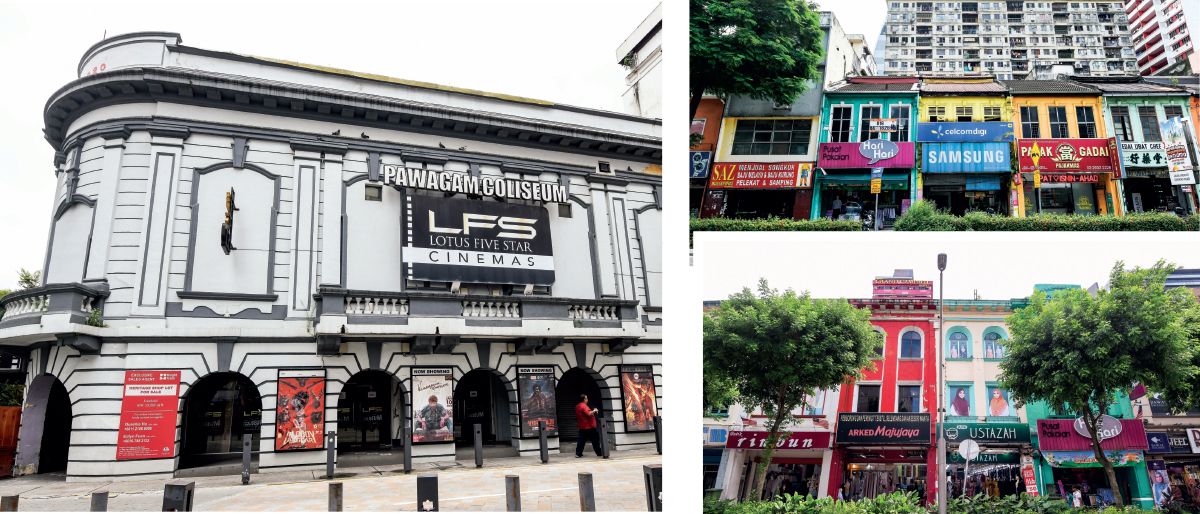
The existing Mydin store on Jalan Masjid India is the retailer’s first branch in KL, and Haniffa’s first outlet in Malaysia was located at the Malayan Mansion on the same street before it moved to its current premises in the early 2000s.
Meanwhile, the Jalan TAR section north of the Dang Wangi junction differs quite dramatically in terms of scenery from the one closer to the historical quarters, with the presence of more office towers and multi-storey complexes. The northern section also offers more diverse offerings, including pawnshops, goldsmiths and jewellers, auto repair shops, old photo shops as well as banks, offices as well as budget and three- and four-star hotels.
One can easily imagine how Jalan TAR was once considered prime real estate, much like the Bukit Bintang strip today, as it boasted prominent retail malls back in the day.
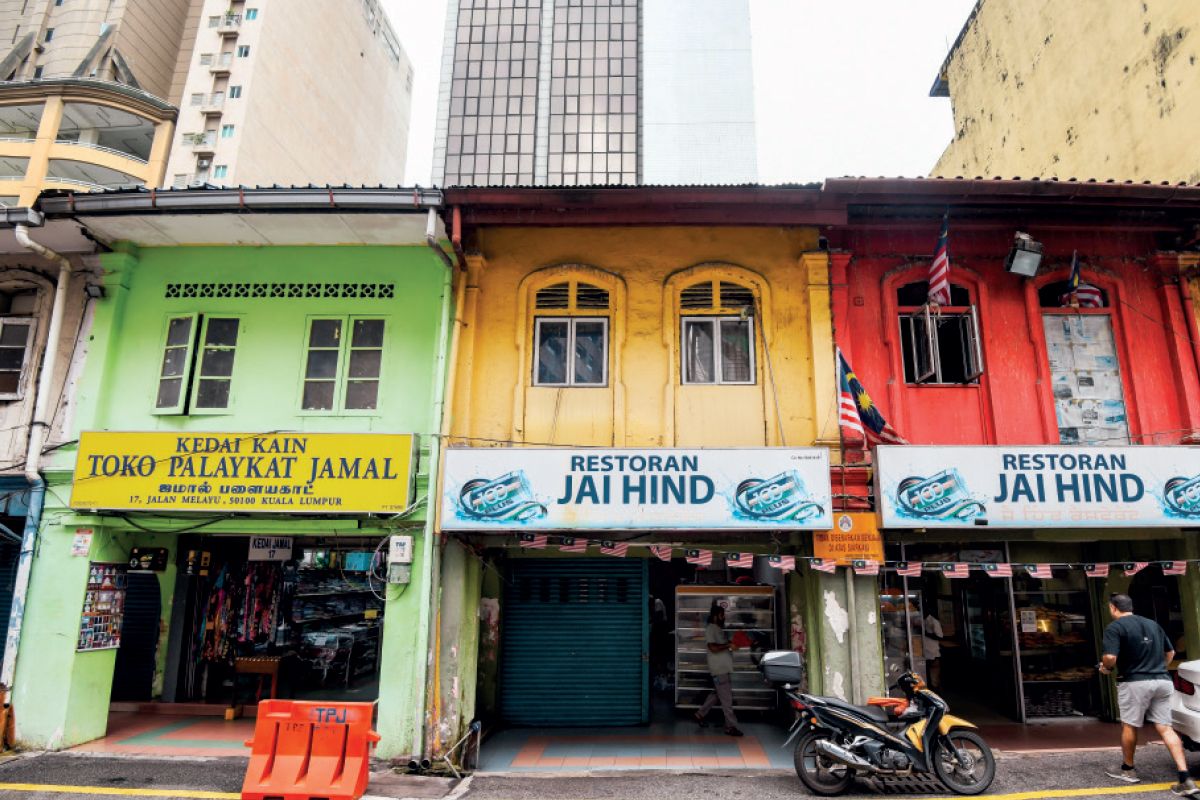
Pertama Complex and the Campbell Shopping Complex nearby are some of Malaysia’s first shopping complexes, and the SOGO department store is the first in Malaysia.
The area is also the birthplace of Gulati’s, whose first outlet was at the Semua House shopping mall nearby before it moved to its first shoplot on Jalan TAR. Kamdar’s first store was originally on No 69 Jalan TAR before it moved to its current premises at No 113.
Jalan TAR continues to be home to iconic establishments such as G S Gill sports retailer, KSGills pen shop and P H Hendry jewellers.
According to JPPH and Knight Frank Research, pre-war buildings on Jalan TAR have been transacted at a five-year average of RM1,000 to RM1,100 psf. It adds that the average transacted rental rates of the shophouses on Jalan TAR are RM11.50 psf over built-up area.
“Jalan TAR and its adjacent streets enjoy high occupancy rates and continue to be a highly popular destination,” says Joshua.
The stretch has seen a couple of renewals lately, with the revival of Semua House on Jalan Bunus 6. Landmarks such as Coliseum cinema (now LFS Coliseum) and Odeon cinema, built in 1920 and 1936 in the Art Deco and Neoclassical styles of architecture respectively, have also been restored by their owners.
Meanwhile, the fate of the iconic Coliseum cinema and Coliseum Café and Hotel buildings remains in limbo, as they have been put up for sale.
“The Coliseum cinema, café and hotel hold significant heritage value. With the right vision, its preservation through adaptive reuse that aligns with the street’s character could make it a cornerstone of the ongoing urban renewal in the area. And with its rich history and modern updates, Jalan TAR remains a popular destination for locals and visitors,” says Joshua.
“As Kuala Lumpur evolves into a modern metropolis, its historic streets remain a testament to its rich culture and commercial heritage. Preserving and revitalising these iconic areas is key to honouring the past while embracing the future.”
Save by subscribing to us for your print and/or digital copy.
P/S: The Edge is also available on Apple's App Store and Android's Google Play.
- Fire incident in Putra Heights not related to Gas Malaysia facilities, company says
- Massive gas pipeline fire in Puchong — Fire Dept
- Petronas confirms fire incident at Petronas Gas main pipeline near Puchong
- Gas pipeline blaze: 25 receiving initial medical treatment as of 10.35am
- Gas pipeline blaze victims recount earthquake-like tremors
- SpaceX eyes Starlink hub with multiple ground stations in Vietnam — Reuters
- Teleport to raise a maximum of US$100 mil for capacity expansion
- Gas pipeline blaze: 82, including 12 injured rescued — Selangor MB
- Gas pipeline blaze: PM urges state govt, relevant agencies to provide assistance
- Singapore’s Capital World says MACC froze its unit CCP’s bank accounts to facilitate ongoing investigations


